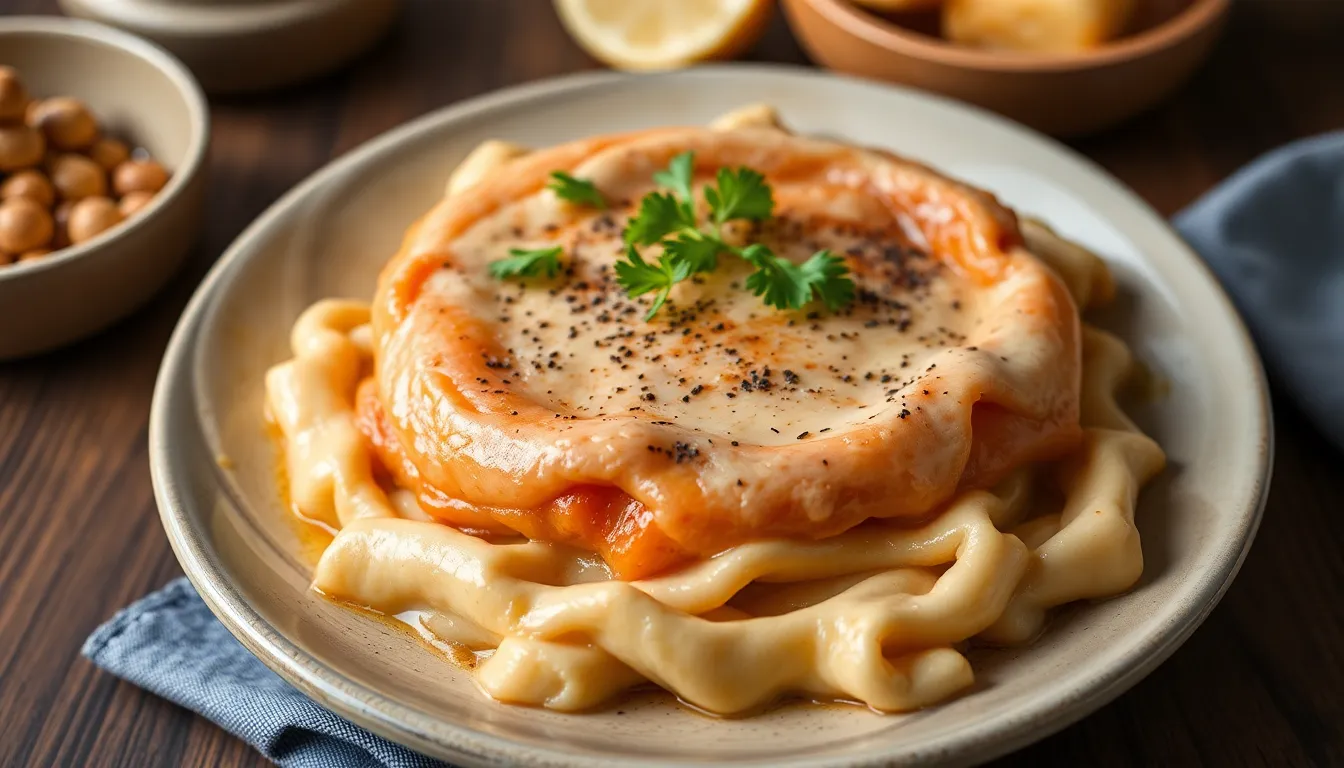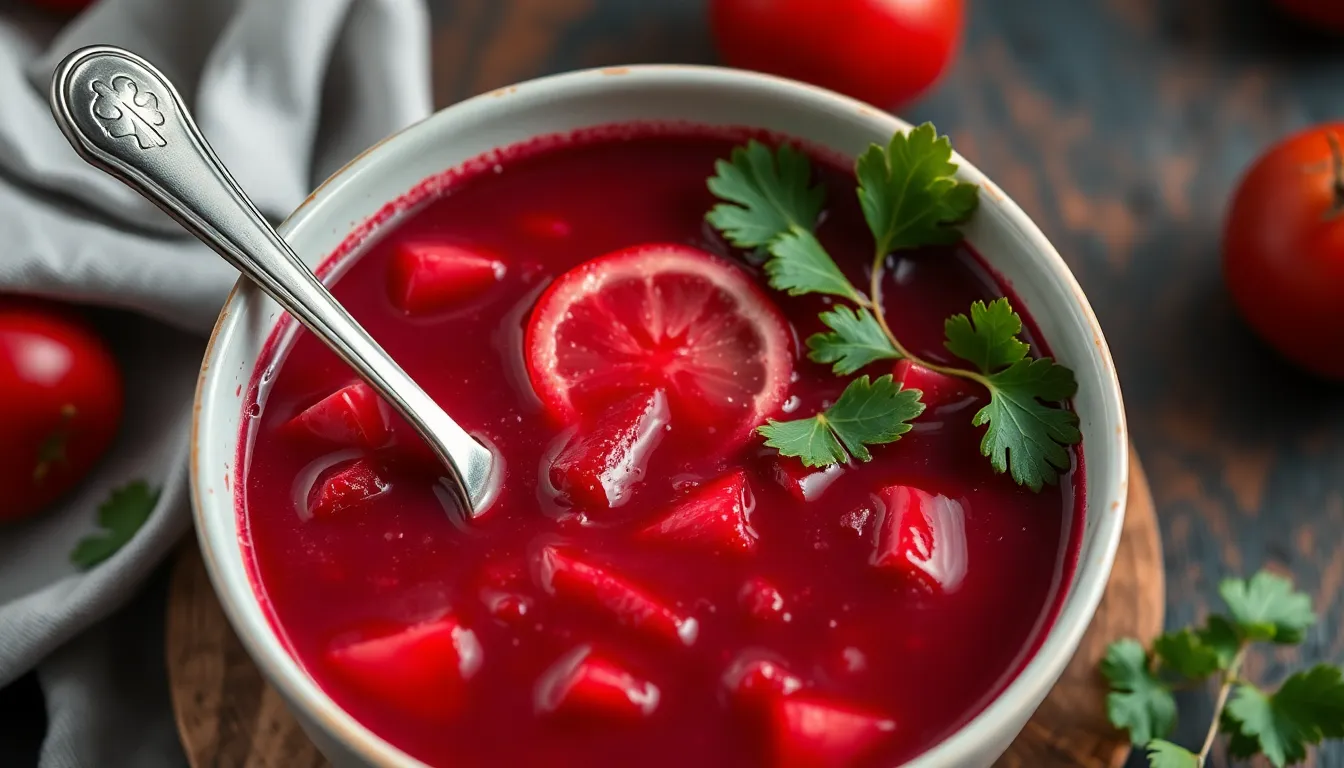A Beginner’s Guide to Making Perfect Russian Dumplings (Pelmeni) from Scratch
Introduction: Discover the Delight of Pelmeni
Pelmeni, those delightful little dumplings, are akin to a warm hug in the form of food. Originating from the Siberian region of Russia, these tasty morsels have woven themselves into the fabric of Russian cuisine, serving as a beloved staple for families and gatherings alike. Traditionally, Pelmeni are often filled with a mix of meats and spices, encased in a tender dough that is boiled to perfection.
My first experience with Pelmeni was during a chilly winter in Moscow, where I was invited to a local family’s dinner. The table was adorned with steaming plates of these dumplings, served with a generous dollop of sour cream. It was a moment of warmth and connection that I’ll never forget, and it ignited my passion for creating Pelmeni in my own kitchen.
In this guide, we’ll embark on a culinary adventure together. By the end, you’ll be equipped to prepare authentic Pelmeni from scratch, impressing your friends and family with your newfound skills.
Section 1: The Essential Ingredients for Authentic Pelmeni
1.1 The Core Components
The foundation of any great dish lies in its ingredients. For authentic Pelmeni, you’ll need:
- Flour: All-purpose flour forms the base of your dough.
- Water: This binds the dough together, creating its desired texture.
- Eggs: Adding eggs can enhance the dough’s richness.
- Salt: A vital ingredient for flavor.
When it comes to fillings, traditional Pelmeni are often made with a mix of:
- Ground meats such as beef, pork, or chicken.
- Spices like garlic, black pepper, and onion to add depth of flavor.
- Vegetables for those looking for a meatless option.
1.2 Ingredient Substitutions
Cooking is all about flexibility. If you have dietary restrictions or preferences, here are some substitutions:
- For Gluten-Free Dough: Consider using gluten-free all-purpose flour or a blend of rice flour and tapioca starch.
- For Vegan Fillings: Use lentils, chickpeas, or finely chopped mushrooms and spinach.
1.3 Shopping Tips
Finding the right ingredients can elevate your Pelmeni-making experience. Here are some tips:
- Visit local Eastern European markets for authentic ingredients.
- Look for high-quality, finely milled flour to achieve that perfect dough consistency.
- Fresh ingredients, such as herbs and spices, will significantly enhance the flavor of your fillings.
| Ingredient | Description | Substitutes |
|---|---|---|
| All-purpose Flour | Main ingredient for the dough | Gluten-free flour |
| Ground Meat | Traditional filling (beef, pork, chicken) | Mushrooms, lentils |
| Onion | Adds flavor to the filling | Shallots, leeks |
| Water | Binds the dough | Vegetable broth |
Section 2: Mastering the Dough: The Heart of Pelmeni
2.1 Mixing and Kneading
Creating the perfect dough is an art. Follow these steps for a flawless consistency:
- Start by sifting 4 cups of all-purpose flour into a large bowl.
- Add 1 teaspoon of salt and mix well.
- Make a well in the center and crack 2 large eggs into it.
- Gradually add 1 cup of water, mixing with your hands until the dough begins to come together.
- Knead the dough on a floured surface for about 8-10 minutes until smooth and elastic.
2.2 Resting the Dough
Resting the dough is crucial for achieving the right texture. Cover it with a damp cloth and let it rest for at least 30 minutes. This allows the gluten to relax, making it easier to roll out.
2.3 Dough Variations
For those seeking different textures or flavors in their dough, consider these variations:
- Vegan Dough: Replace eggs with an additional 1/2 cup of water and 1 tablespoon of vegetable oil.
- Herbed Dough: Add finely chopped fresh herbs like dill or parsley to the flour before mixing.
Section 3: Crafting the Perfect Filling
3.1 Traditional Meat Fillings
The heart of Pelmeni lies in its filling. Here’s a classic meat filling recipe:
- 1 pound of ground beef and pork mix
- 1 finely chopped onion
- 1 teaspoon of salt
- 1/2 teaspoon of black pepper
- 1-2 cloves of minced garlic
Mix all the ingredients thoroughly until well combined.
3.2 Creative Alternatives
If you want to explore beyond the traditional, here are some creative vegetarian and vegan filling ideas:
- Mushroom and Spinach: Sauté 2 cups of chopped mushrooms and 1 cup of spinach with garlic and onions.
- Lentil and Carrot: Cook 1 cup of lentils and mix with grated carrots, onions, and spices.
3.3 Flavor Enhancements
To elevate your fillings, consider adding:
- Fresh herbs like dill, parsley, or thyme.
- Spices such as cumin or smoked paprika for a twist.
- Grated cheese for a creamy texture.
Section 4: Assembling Your Pelmeni Like a Pro
4.1 Rolling the Dough
The thickness of your dough plays a crucial role in the final product. Here’s how to roll it out effectively:
- Divide the rested dough into quarters to make it manageable.
- Lightly flour your work surface and roll out one portion of dough to about 1/8 inch thick.
- Keep the remaining dough covered to prevent it from drying out.
4.2 Cutting and Shaping
Once your dough is rolled out, it’s time to cut and shape:
- Use a round cutter (about 3 inches in diameter) to cut circles from the dough.
- Place about a teaspoon of filling in the center of each circle.
- Fold the dough over to create a semi-circle, pressing the edges together to seal.
- Pinch the edges to ensure they are secured and form a little shape resembling a sack.
4.3 Sealing Techniques
To ensure your dumplings don’t burst during cooking, you can employ various sealing techniques:
- Use a fork to press down on the edges for a decorative finish.
- Moisten the edges with water before pressing them together to create a better seal.
Section 5: Cooking Your Pelmeni to Perfection
5.1 Boiling vs. Freezing
Pelmeni can be enjoyed fresh or frozen for later use. If you choose to freeze them:
- Place uncooked Pelmeni in a single layer on a baking sheet and freeze until solid.
- Transfer them to a freezer bag for long-term storage.
For cooking:
- Bring a large pot of salted water to a boil.
- Add the Pelmeni and cook until they float to the surface, about 3-5 minutes.
5.2 Cooking Techniques
While boiling is the most common method, you can also steam or fry Pelmeni:
- Steaming: Place dumplings in a steamer basket and steam for about 8-10 minutes.
- Frying: Sauté boiled Pelmeni in butter until golden and crispy.
5.3 Serving Suggestions
Pelmeni are traditionally served with:
- Sour Cream: A dollop on top enhances the flavors.
- Chopped Fresh Herbs: Parsley or dill add a fresh touch.
- Hot Sauce: For those who like a bit of heat.
Conclusion: Your Journey into the World of Pelmeni
Congratulations! You’ve now mastered the art of making Pelmeni from scratch. Whether enjoyed on a cozy night in or presented at a festive gathering, these dumplings are sure to impress and delight. As you experiment with different fillings and techniques, remember that the heart of Pelmeni is all about sharing and enjoying food with loved ones. So, roll up your sleeves, embrace the process, and let the delightful journey of Pelmeni-making begin!




